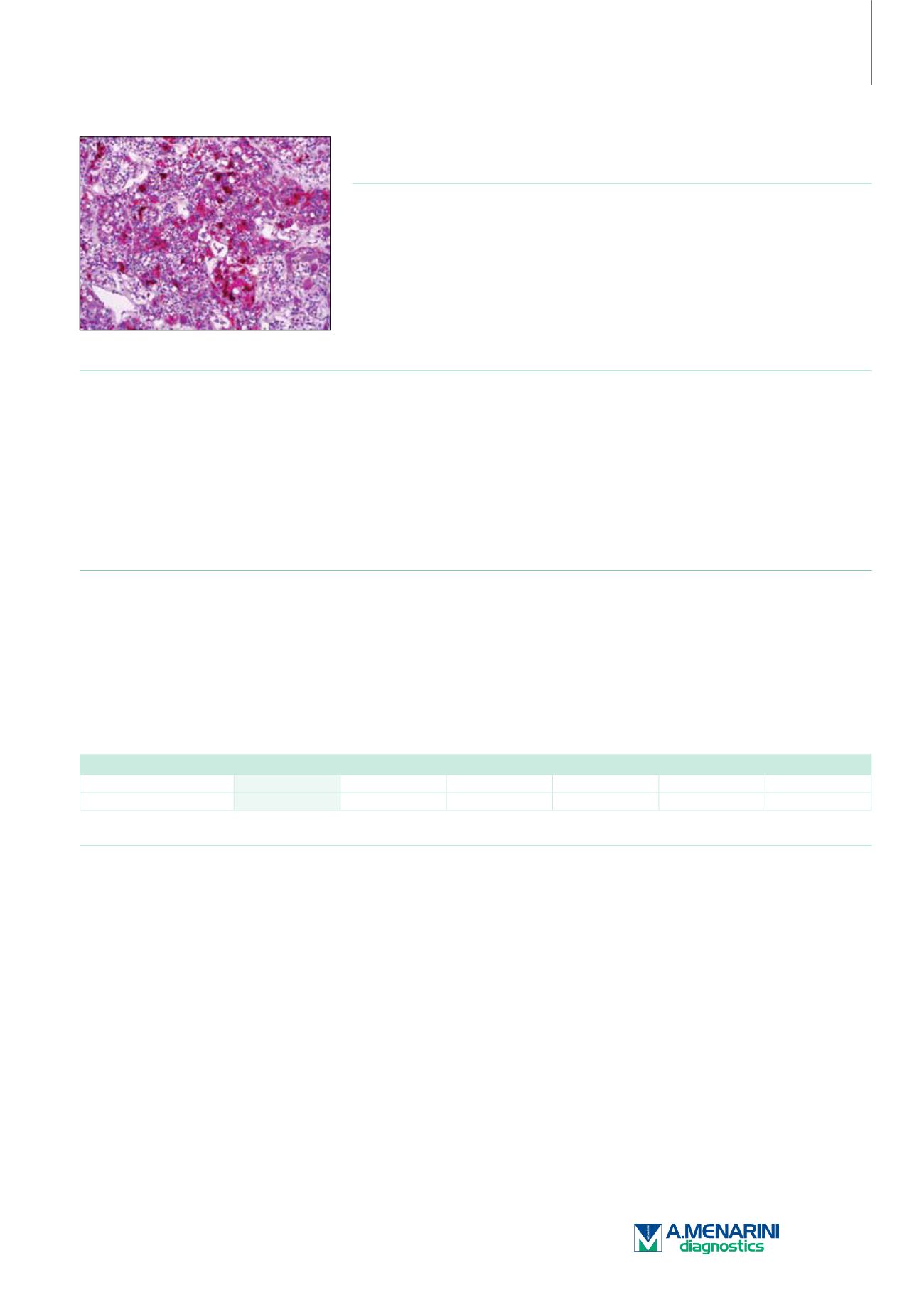
Advanced Solutions
for Advanced Pathology
TSH (Polyclonal)
Rabbit Polyclonal Antibody
Cat. No. Description
Volume
45264 IMPATH TSH RTU R (Poly)
50 Tests
44400 TSH RTU R (Poly)
7 ml Ready To Use
44819 TSH 0,1 R (Poly)
100 µl liquid Concentrated
44820 TSH 1 R (Poly)
1 ml liquid Concentrated
Product Specifications
Designation
IVD
Reactivity
Paraffin
Visualization
Cytoplasmic
Control
Pituitary
Stability
Up to 36 mo. at 2-8°C
Manual Protocol*
• Pretreatment: Heat Induced Epitope
Retrieval (HIER)
• Primary Antibody Incubation Time:
10-30min @ 25-37°C
• 2-step polymer detection
*Please refer to product insert for complete protocol.
ImPath Protocol*
• Dewax: Dewax Solution 2 (DS2)
• Pretreatment: Retrieval Solution pH 9.0
(TR1) 32min @ 98-103°C
• Primary Antibody Incubation Time:
10-90min @ 25-37°C
• HRP Polymer (Universal) or AP Polymer
(Universal) for 12 min
*Please refer to product insert for complete protocol.
Product Description
Thyroid-stimulating hormone (also known as TSH or thyrotropin) is a peptide hormone synthesized and secreted by thyrotrope cells in the
anterior pituitary gland which regulate the endocrine function of the thyroid gland. TSH is a glycoprotein and consists of two subunits, the alpha
and the beta subunit, which are non-covalently bound to one another. The alpha subunit of TSH is also present in two other pituitary glycoprotein
hormones: Follicle stimulating hormone and luteinizing hormone and, in primates, in the placental hormone chorionic gonadotropin. Each of
these hormones also has a unique beta subunit, which provides receptor specificity. In other words, TSH is composed of alpha subunit bound
to the TSH beta subunit, and TSH associates only with its own receptor. Free alpha and beta subunits have essentially no biological activity.
Anti-TSH reacts with TSH-producing cells (thyrotrophs), and is a useful marker in classification of pituitary tumors and the differential identification
of primary and metastatic tumors in the pituitary gland.
Pituitary Panel
TSH
ACTH
FSH
GH
LH
Prolactin
Pituitary
+
+
+
+
+
+
Reference
1. Batanero E, et al. Brain Behav Immun. 1992 Sep; 6(3):249-64.
2. Kovalic JJ, et al. J Neurooncol. 1993 Jun; 16(3):227-32.
3. Gessl A, et al. J Clin Endocrinol Metab. 1994 Oct; 79(4):1128-34.
4. Sanno N, et al. J Clin Endocrinol Metab. 1995 Aug; 80(8):2518-22.
5. La Rosa S, et al. virchows Arch. 2000 Sep; 437(3):264-9.
6. Kuauya N, et al. J Clin Endocrinol Metab. 1990 Nov; 71(5):1103-11.
7. Clore JN, et al. Am J Med Sci. 1988 Jan; 295(1):3-5.
233


